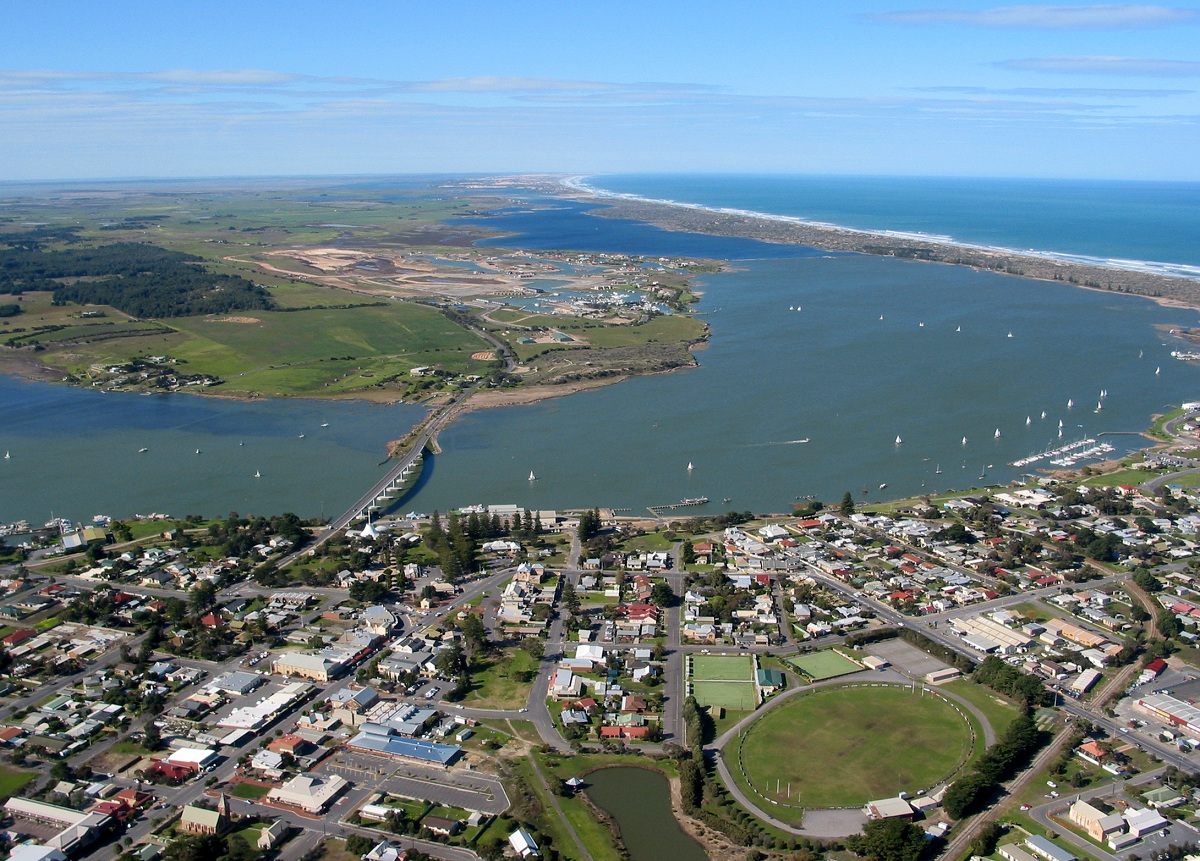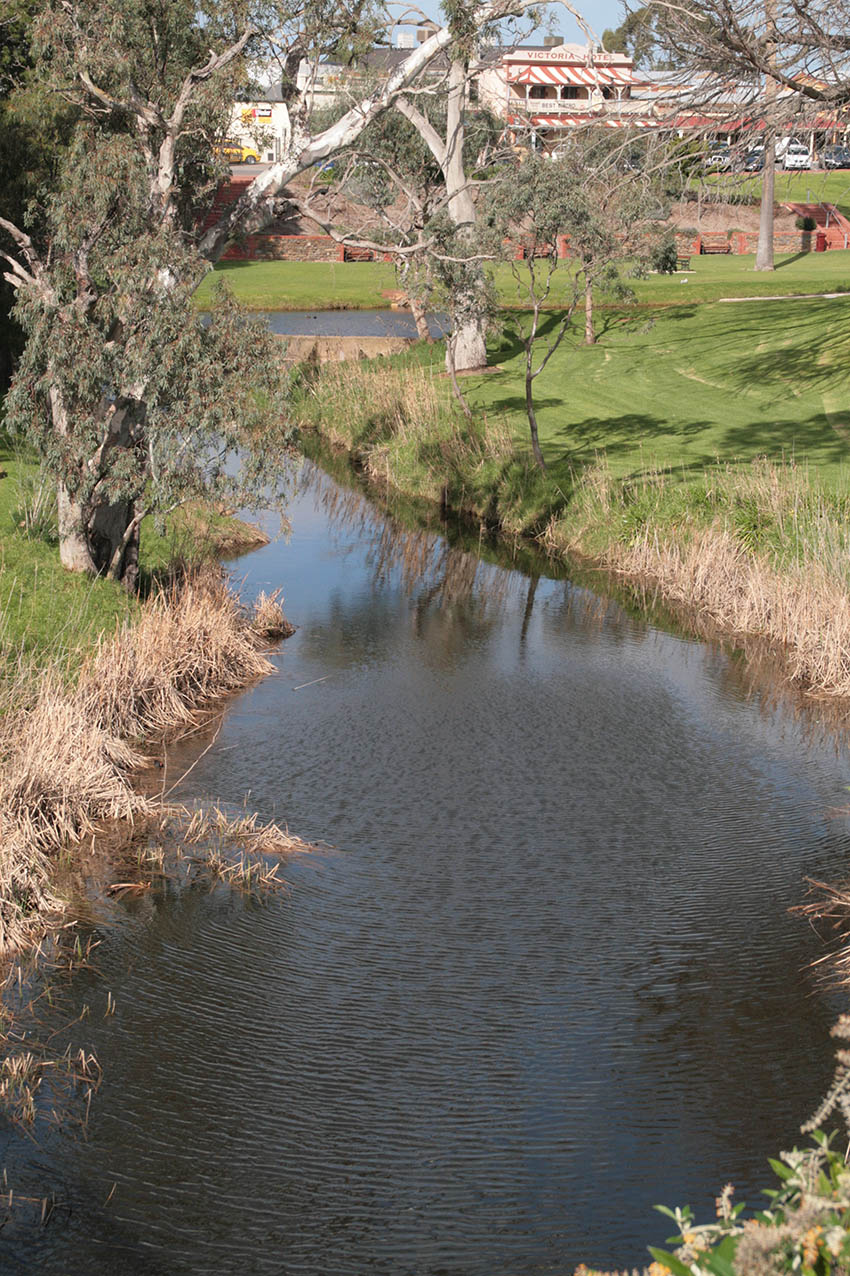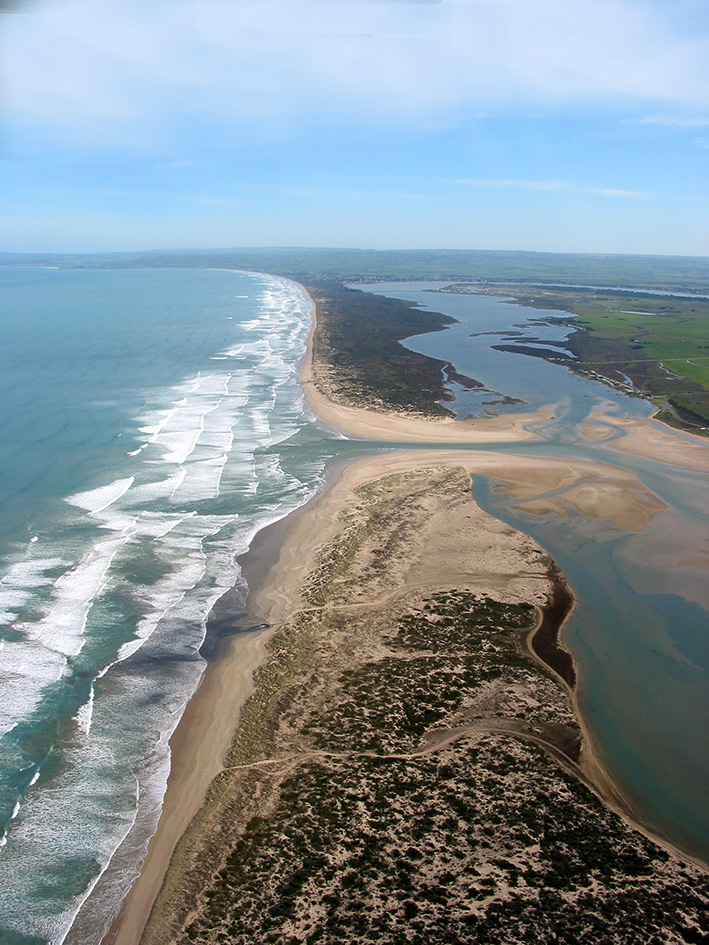


The diversity of freshwater, estuarine, coastal, and marine ecosystems across our region is extraordinary. We are known nationally and globally for our aquatic environments and the ecological communities they support. This environment is very special to us who live, study, work and play in the region, a place where all major townships are located close to significant bodies of water.
Alexandrina’s catchments drain from the eastern side of the Mount Lofty Ranges towards the River Murray. Included in this area are the catchments of the Bremer, Angas, and Finniss Rivers, along with Tookayerta Creek.
The River Murray is Australia’s longest and one of its most important river systems. In Alexandrina, it travels through Lake Alexandrina before it flows towards the river mouth from two directions, bounded by Hindmarsh Island. The Murray Mouth is where the fresh water of the River Murray meets the Southern Ocean, or Ruwe – ‘meeting of the waters’, as it has been known to Ngarrindjeri people for millennia.
The Finniss River, Currency Creek, Goolwa Channel, Hindmarsh Island and Lake Alexandrina are all part of the internationally listed Coorong and Lakes Alexandrina and Albert Ramsar Wetland, recognised as one of Australia’s most important ecological assets.
Alexandrina’s 25 kilometre coastline is of significant cultural, social, environmental, and economic value to the local community, Ngarrindjeri nation, and visitors to the region. It contains exposed surf beaches, sheltered sandy beaches as well as rocky outcrops.
We are also fortunate to have the Encounter Bay Marine Park and varied coastal wetland ecosystems. The marine park provides plenty of opportunities for visitors and residents alike to enjoy the diverse marine life including leafy sea dragons, Australian sea lions, dolphins, and whales. In winter, Southern Right Whales come to give birth, and whales can be frequently seen from our beaches.
Inland, remnants of the Fleurieu Swamps are distributed across the Currency Creek, Tookayerta Creek and Finniss River catchments. We have many species that rely on these aquatic and diverse ecosystems, including birds, mammals, flora, and vegetation communities. Many of these animals, plants, and ecosystems are critically endangered and listed nationally under the Environment Protection and Biodiversity Conservation Act 1999.







